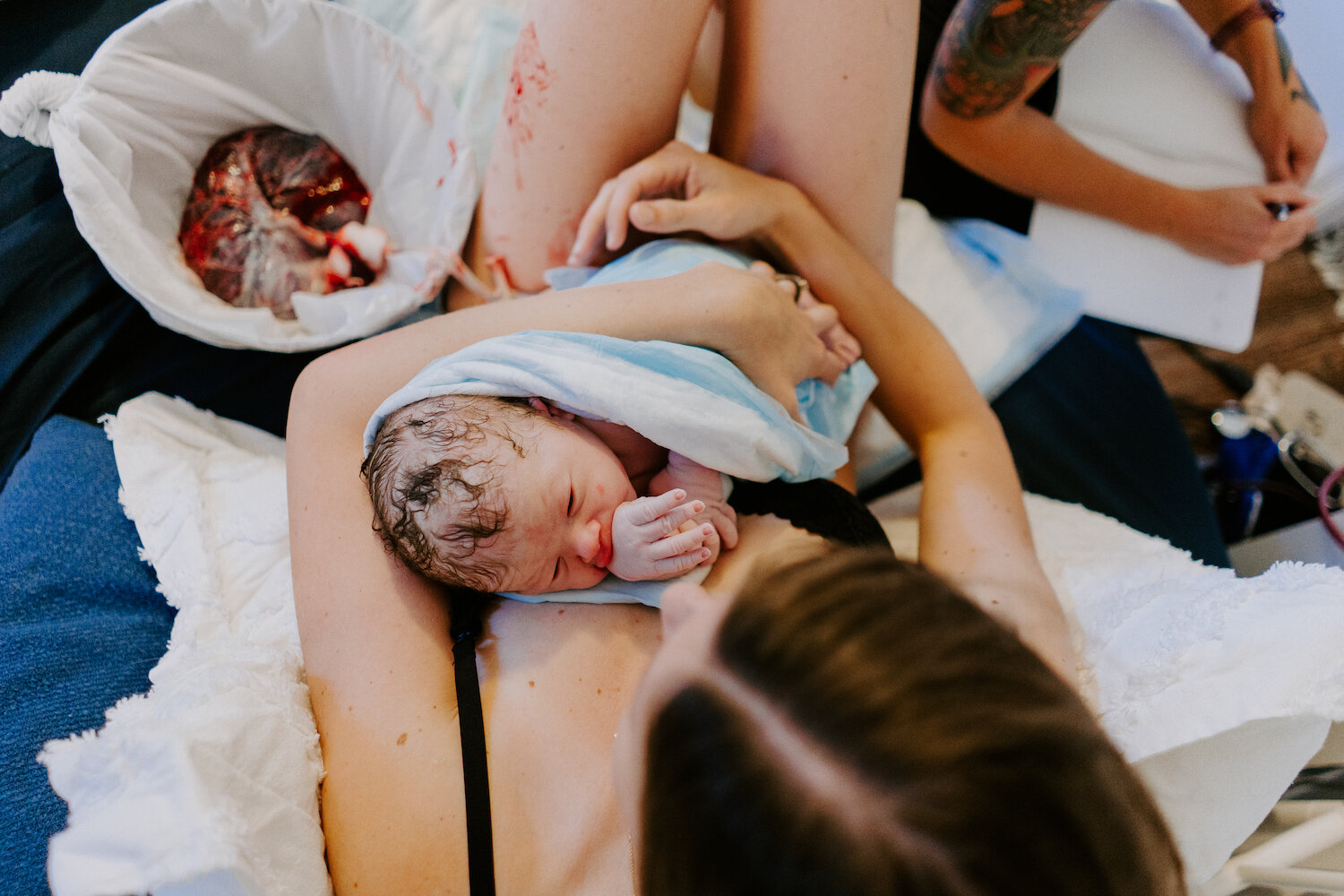6+ fun facts about your placenta
To be completely honest, I have not always been a self-proclaimed “placenta nerd”. Before having kids this squishy, jellyfish looking organ was just a disposable byproduct of giving birth. It wasn’t until later when I learned all these amazing little facts that I looked at it with different eyes. While there is still a lot to learn about its function, I wanted to share with you my Top 6 favorite facts about your placenta:
Picture of my own placenta after my son’s home birth in 2018 (PC: Micah Simmons Photography)
Let’s kick this off with a few ‘quickies’:
- The combined length of all the capillaries in your placenta is 32 miles
- It produces the hormones that signal the start of milk production at the end of pregnancy
- By the time your baby is born, the placenta will be 8 to 9 inches wide, an inch thick in the middle and weigh up to 3 pounds
- The placenta is called the ‘Tree of Life’
Ok, let’s dive in a little deeper
1. THE PLACENTA FUNCTIONS AS NUMEROUS ORGANS AND PROVIDES IMMUNITY TO YOUR BABY LONG AFTER BIRTH
It acts as the baby’s lungs by providing oxygen from the mother through the placenta and the umbilical cord to be delivered into the baby’s bloodstream, as their kidneys by filtering out waste, and as their immune system by delivering nutrients and antibodies.
During pregnancy, the placenta transfers antibodies from the mother to the fetus that provide immune protection. These antibodies can provide three to six months of immunity for the baby after birth.
2. MOM AND BABIES BLOOD PASS THROUGH THE PLACENTA, BUT THEY NEVER MIX
The placenta’s attachment to the uterus is where the maternal blood and baby blood exchange oxygen and nutrients, but if their blood was to intermingle it could cause problems since mama’s immune system would create antibodies to get rid of the baby’s blood. Instead, the blood passes through separate arteries. Incredibly, about 20 per cent of the mother’s blood flows through the placenta every single minute.
3. THE PLACENTA HAS SPIRITUAL MEANING IN OTHER CULTURES
In different parts of the world, the placenta is seen as more than just a disposable organ. In Peru, India and Nepal, the placenta is considered a friend to the baby. In Malaysia and Indonesia it’s an elder sibling, a twin in Nigeria, and part of the baby itself in Hawaii.
In Pedi it’s known as the ‘baby’s blanket’, the ‘baby’s cushion’ or the ‘baby’s cradle’.
4. YOU MAY CARRY IDENTICAL TWINS, BUT THEY DON’T HAVE TO SHARE A PLACENTA
When giving birth to identical twins, the number of placentas is determined by when the fertilized egg splits. If the egg splits before the placenta develops, each baby will have its own placenta (Di/Di twins where each baby has their own amniotic sac and placenta). If the egg splits after it develops, both babies will be sustained by one placenta (Mono/Di or Mono/Mono depending on whether babies share the same amniotic sac as well). With fraternal twins, there will always be two placentas.
5. EACH TIME A WOMAN GETS PREGNANT, A NEW PLACENTA GROWS.
The human body has several parts that used to have a purpose but no longer do, like the appendix and wisdom teeth. The placenta is the only organ that disposes of itself when it’s no longer needed. So with each pregnancy, your body grows a new placenta. Actually, placentas start forming and developing as early as the fertilized egg implants into the uterine wall. By week 12 of pregnancy, placentas have established their own blood supply.
“Each time the placenta is new. It is genetically distinct to that pregnancy and that child,” says Catherine Spong, acting director of the National Institute of Child Health and Human Development.
6. THE PLACENTA CAN BE INGESTED
The placenta can be eaten raw, in smoothies, dehydrated or encapsulated into a pill. In case of a third stage hemorrhage, eating a piece of raw placenta is said to help with hemorrhage control as well as an alternative to Pitocin. In recent years more and more women have been researching the benefits of placenta encapsulation and other forms of preparation. This practice is supposed to help with postpartum depression, pain relief and other complications.
So with your next baby – ask for a tour of your placenta, look into consumption (if that is your thing), or plant a tree on it. It’s truly too amazing of an organ to just land in the trash unacknowledged!
Tell me, did you get to see your placenta with your babies?
If you want your birth story told - the complete story, all phases, all emotions, I’d love to chat!
Resources:
https://www.nytimes.com/2014/07/15/health/the-push-to-understand-the-placenta.html?_r=1
https://womensenews.org/2013/07/placenta-spiritually-revered-not-in-the-west/
https://www.whattoexpect.com/pregnancy/placenta
https://www.mentalfloss.com/article/79389/10-incredible-facts-about-placenta







